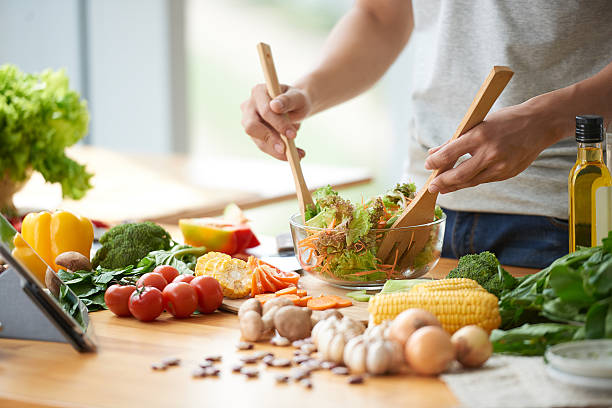How To Get The Most Out Of A Recipe

Recipes can take you from raw ingredients to delicious dinner, but they can also be complex beasts, filled with unfamiliar ingredients and daunting terminology. The fastest way to overcome recipe reading anxiety? Get into the kitchen--the more you cook, the more comfortable you'll be understanding what food recipe are trying to get you to do. But there are a few tricks to decoding even the most opaque of recipes. Here are some of our favorite tips:
Read Carefully
The first rule of following a recipe is read the recipe. This may seem obvious, but even seasoned cooks (yep, we're guilty too) will eagerly jump right into cooking, only to realize halfway in that they are missing a key ingredient. So carefully read through the recipe. And before you get started, check that you have all the ingredients and necessary equipment, as well as the time, to make the entire recipe.
Understand the Basics
When we develop recipes at Foodsavingexpert, we use certain rules. If a recipe calls for "eggs," we mean large eggs. Unless specified, "sugar" means white sugar. For "flour," it's gonna be all-purpose flour. And the comma in ingredient lists is very important: instructions that follow an item are meant to be done after you measure them. So for "1/2 cup walnut pieces, chopped," you should measure out a half cup of walnuts, then chop this amount.
These rules are not written in stone--and obviously every cookbook author has their own style--but they are fairly standard. When in doubt, go with the standard. Check out foodsavingexpert for more info about recipe.
Get to Know the Writer
Not every recipe is equal; writers often differ on what they mean by techniques and ingredients. Many cookbooks, especially those written by chefs, assume you'll follow some basic culinary behavior. For example, while chefs generally season their food during every step of the process--during blanching, sauteing, and to taste at the end--their cookbooks might not reflect this in the instructions.
The best thing you can do to help understand the recipe is read the first chapter of the cookbook you're using; this section usually defines unfamiliar ingredients and lays out some ground rules for what the author means by certain terms. When searching online for recipes, seek out those with a lot of user comments and reviews, which can help you pick a solid recipe and avoid mistakes others have made.
Trust Yourself
Since every kitchen/oven/cook is different, it's important to choose recipes that give visual cues, as well as cook times. Stick to the instructions, but if it looks like your cake is done (and it matches the recipe's description for done), then take it out, even if the instructions say bake five more minutes. If your roasting pan looks too dry, it probably is, and it's better to add more liquid than follow a recipe into burnt territory. If the cook time is given in a range, make sure to check it at the shortest end of the range. It's also a good idea to invest in an oven thermometer, to ensure you are actually baking at the specified temperature.
Don't Be Afraid to Freestyle
As important as it is to read the recipe, and stick to it, remember to be flexible as well. Just because you don't have something, doesn't mean you can't make the recipe; substituting ingredients can totally work. If a recipe calls for white onion, using red or yellow is usually fine. If you don't have potatoes for a shepherd's pie, you can still make the dish, swapping in any root vegetables you have on hand. For grain salads, using another variety is fine--just make sure to follow the proper cooking technique for the specific type.
In baking, which relies on the proper combination of dry and wet ingredients to create the right texture, you'll want to stick to the recipe as written. You can freestyle with the flavorings though. If you don't have cinnamon, add in vanilla, nutmeg, or allspice instead.
